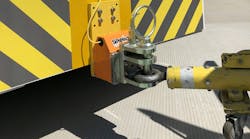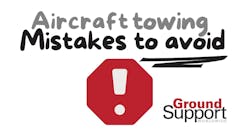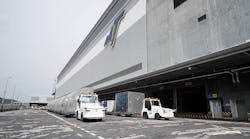“Airport ramps are busy and dangerous places, confined areas in which aircraft, vehicles and people are in constant motion in all types of weather. Turnover among personnel typically is high, training can be spotty, and standard operating procedures may be nonexistent or ignored. Often, the focus on schedule overshadows concerns about safety.”
Sums up life on the ramp quite nicely, don’t you think? Too bad then that the words are from the introduction to a feature on incursions printed in Flight Safety Foundation’s magazine almost eight years ago.
What’s changed? Busy, dangerous place? You bet. All types of weather? It’s all under a great, big sky. High turnover? Spotty training. Yes and yes.
In this month’s cover story, we take a look at a few ways technology can help to stop incursions, that is accidents involving ground support equipment and aircraft. The reporting for our introduction highlighted a study done the Foundation that for the first time looked to quantify the problem. Since then, most numbers you read go back to this data that put a price tag on ramp accidents at $10 billion from some 27,000 accidents annually.
INJURY RATE
But take a look at another number from the Foundation’s original report: About 243,000 people are injured each year in these accidents. That’s an injury rate of 9 per 1,000 departures.
More recently, a USA Today story written toward the end of last year added that 99 people were killed in ramp accidents since 2001, according to data compiled by the Service Employees International Union.
The story went on to include a litany of fatalities and injuries, including the following:
FATALITIES
- Southwest baggage cart driver struck by a shuttle bus at IAD in 2012.
- United worker falls 8 feet off a cargo loader at IAD in 2011.
- US Airways baggage loader killed after belt loader collides with jet at DCA 2005.
INJURIES
- US Airway worker breaks left leg and ankle after falling 10 feet from a boarding bridge at SOF in 2012.
- Delta worker received head injuries after falling 7 feet from a belt loader at LAX in 2010.
- United worker fractured foot after plane’s nose wheel rolled forward at LAX in 2011.
There’s considerably more on this list, but you get the message.
One item, however, does seem to have changed since the Flight Safety Foundation published its article, “Defusing The Ramp.”
IATA, for its part, has made considerable strides in developing standard operating procedures with its international safety programs and operations manual. Plus, a couple of years ago the organization started its Ground Damage Database to help categorize the accidents that have happened to lend some certainty to halting the accidents that haven’t happened yet.
No doubt, $10 billion is a lot of money, and worse, that tally represents an utter waste of a finite resource. But ramp workers lives and their well-being is just as precious.




